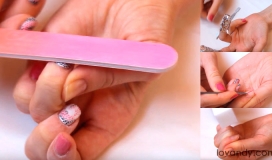Swelling in feet and ankles is a common problem. It has many different reasons, which may even combine. So, how do you treat swelling and prevent it in future?
Why are My Feet Swollen?
Swelling is actually an accumulated liquid in some parts of your body. Why does it happen? Normally, the smallest capillaries take all the spent fluid from the intercellular space and transport it further along the veins. The ability of capillaries to perform their function is influenced by the permeability of vascular walls, blood pressure in peripheral vessels, blood content of proteins and sodium. If something mentioned goes wrong, liquid is not taken away, so a swelling forms.
Even healthy people may suffer from edema in feet and ankles, as it may be formed due to physiological reasons, such as:
- Eating too much salty food or drinking too much liquid. As a result, capillaries do not have time to take all the fluids away from cells.
- A hot weather, when your body starts to activate protection mechanisms against overheating. One of them is the expansion of peripheral vessels, whereby the pressure therein drops. This leads to the accumulation of water in the tissues.
- A long stay in standing position or sitting in an uncomfortable position. The pressure in veins increases, and they cannot fully perform their functions.
- Wearing high-heels or other uncomfortable shoes, as it also leads to an excess pressure in capillaries.
However, some diseases or pathological conditions of your body might cause swelling in feet as well.
The most common ones are:
- Varicose veins;
- Inflammation and thrombosis of veins;
- Heart diseases accompanied by heart failure;
- Kidney diseases;
- Stagnation of lymph;
- Diseases of the thyroid gland;
- Diabetes;
- Liver cirrhosis.
If you have some of these health problems, feet swelling might become a symptom.
However, it is strongly recommended to ask your doctor about the reason of edema anyway.
Considering all the variety of possible reasons, swelling may come in different forms. It is important to understand each in order to know the seriousness of the problem. Let us describe the most distinctive ones.
Reasons for Swelling in One Foot
One foot swelling means that the symptoms have manifested locally. These may be anything mentioned before.
The most common are listed below:
- Varicose veins. If more vessels are sick in left leg, for example, than the swelling will probably come there first.
- This disease affects only one foot. Symptoms are inflammation and pain in the area of thrombophlebitis spreading.
- If you tend to sit cross-legged, the leg that gets below more often may swell.
- It is known that left and right feet have different sizes. That is why uncomfortable shoes may become a reason of one ankle swelling.
- Stagnation of lymph also manifests locally, so it may lead to edema.
Reasons for Ball of Foot Swelling
The swelling in the ball of foot is usually caused by physical pressure. However, some diseases, such as thrombophlebitis may also lead to it. Ask your doctor to make sure that there is no sickness.
If so, this means you need to change your shoes or stop wearing high-heels.
Ball of foot may also swell after running or doing some sport for too long. This is not a reason to worry, but you will need a few days rest.
Swollen Feet and Ankles During Pregnancy: Is It Ok?
Your feet and ankles may start swelling on a fourth month of pregnancy. This is because hormones of the placenta contribute to the expansion of blood vessels and the retention of sodium in the body.
Swelling is not a problem if it is manifested in the evening after a hard day. However, you should consult with a doctor if it is not gone in the morning.
Pregnancy also means excessive pounds. Therefore, you should not exclude an increased pressure on legs. It may be a reason of edema, as your feet need to carry a greater weight. If the reason of swelling has nothing to do with diseases, learn how to reduce it in the paragraph below.
How to Reduce Swelling in Feet and Ankles
The first signs of swelling in legs are small marks from rubber bands of socks on your shins, an uncomfortable feeling when walking in familiar shoes that used to be comfortable. Later, you will notice the edema forming.
Treatment consists, first of all, in an adequate therapy of the underlying disease. Various diuretics and drugs are used for eliminating the stagnation of fluid in legs. The treatment aims on improving microcirculation in the tissues. Notice that you should not use any medicaments by yourself. Always ask your doctor about any problems.
To ease your condition at home and reduce the swelling of your legs, you can do the following:
- Massage feet and legs. It should not be too complicated. You do not want to compress your legs too much. Just rub your skin gently where it is swollen. If you want to use some essential oil, ask your doctor first.
- Do some exercises. It can be anything that helps make blood circulate better. However, it is not recommended to do some hard exercises, as they might be harmful. Examples are:
- bend and unbend your toes;
- rotate the foot;
- roll a rubber ball on the floor;
- stand on your toes;
- walk at home with bare feet.
- Take warm footbaths with some essential oils. It will warm up your legs and normalize the circulation of liquids.
- Lie on bed with your legs up. This will help blood and fluids go down your vessels.
- It is a good idea to drink some herbal teas that help blood circulation. However, ask your doctor if a certain tea can be combined with the medicine he prescribed.
In general, you need to warm up your feet and stretch them, but not too much. Any exercises must be slow and steady. It is bad to affect your legs with a lot of pressure, as it may lead to pain and further swelling.
If you want to prevent the swelling of feet and ankles, you should follow these simple advice:
- Wear comfortable shoes. Remember that flat sole is very harmful for your feet and spine. However, very high heels are also bad. Try to replace them with some sneakers (when nobody sees you).
- Do not eat too much salt or salty food.
- Perform some exercises daily. It is best to do so in the morning and in the evening.
Do not stop drinking if you notice your feet swelling. This may lead to further accumulation of liquids.
If you are pregnant, the list of useful tips for you increases:
- Stop eating thirsty products, such as ice creams, cheese, cakes, kefir and spicy foods.
- Do not drink soda or cola – these are thirsty drinks.
- It is better to cook your food with less salt than usual.
- Eat some fruits and vegetables. Better boiled and steamed.
- Drink herbal teas only if your doctor agrees.
- Perform some gymnastics for pregnant.
- Drink a cup of warm milk before going to bed.
Feet and ankle swelling is mostly a consequence of pressure on legs. However, some serious diseases may manifest in such form as well. Anyway, before doing anything, you should consult with your doctor. It is, of course, much easier to prevent swelling, so, follow our advice, and you will always be fine!













